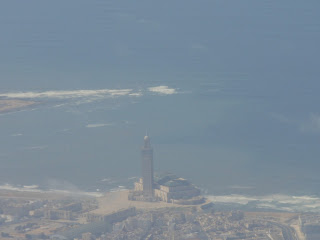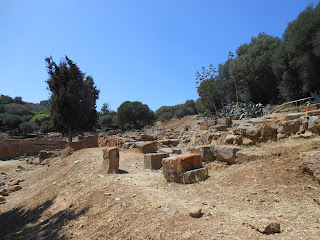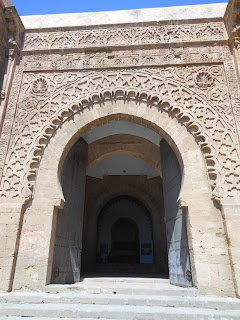Gaudi is the reason I included Barcelona in the
itinerary of my Last Hurrah trip. I’ve loved his work for as long
as I can remember. My first physical meeting with him was on my first
overseas trip back in 1999. There was Gaudi, sitting on a bench,
facing a building he had designed, Casa de los Botines in León,
northern Spain. This photo is a digitial image of two film photos I
took at the time. The digital age took off during my fifteen years of
occasional travel!
In Barcelona, the holy grail is of course La
Sagrada Familia, a temple, not a cathedral and only recently (2010)
consecrated as a basilica. There can’t be too many people who don’t
know of it and its fantastic (in that word’s “imaginative or
fanciful; remote from reality” meaning!) design. What I was not
prepared for were the classic and Gothic elements throughout this
amazing monument – originally commissioned to atone for Barcelona’s
sins of modernity! The Gothic is courtesy of the original architect
from whom Gaudi took over after only a year or so, completely
transforming the original plans. I’m no expert but … you can see
different styles and craftsmen at work in two statues that resonate
with me: David, for my son of the same name, and Veronica holding the
towel with which she wiped the face of Jesus, for my daughter Hilary
Veronica.
Visitors and locals alike cannot ignore Sagrada
Familia’s presence – it’s there on the skyline from all
directions – and the rough outlines of the towers are said to have
been inspired by the rocky outlines of Montserrat.
Sagrada Familia has been a work in progress for
over a century. As you ascend from the Metro, you’re greeted with
an icon that soars to the sky, complete with cranes. Closer up, at
ground level there is the builders yard. The comparison of bare walls
and the intricate, quirky surface that is so familiar is quite stark.
And so much going on in between, from top to
bottom! You get a different view of the work when you go up one of
the towers. A mammoth task in itself, to cover and keep safe work
that has already been done.
A small museum on site has a fascinating array of
machinery, models, photos and hands-on exhibits that explains so much
more about this amazing building.
15 September 2014




















































































